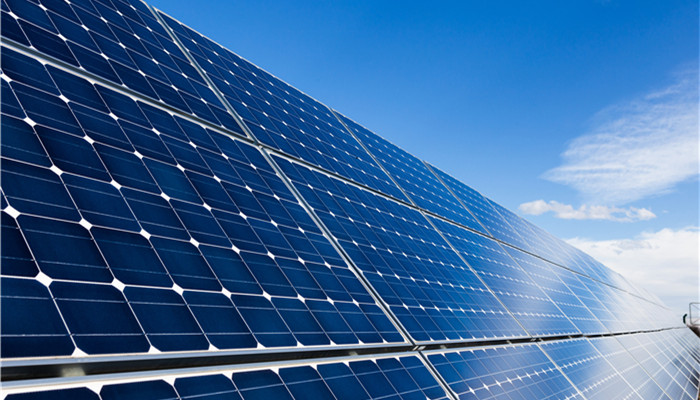
Copper zinc tin sulfur (CZTS) technology is not yet mature and is expected to replace copper indium gallium selenide in the future.
Copper zinc tin sulfur, abbreviated as CZTS in English, has a chemical formula of Cu2ZnSnS4 and has a black powder appearance. It is a high-performance semiconductor material and a direct gap semiconductor. It has the advantages of high light absorption coefficient and ideal band gap value, and can be used to prepare membrane materials. , used as the light absorbing layer of thin film solar cells. Copper-zinc-tin-sulfur is a candidate technology for third-generation thin-film solar cells.
Copper-zinc-tin-sulfur films can be prepared by magnetron sputtering, chemical solution, vacuum thermal evaporation, electrodeposition, spray pyrolysis and other processes. Among them, magnetron sputtering and chemical solution methods can prepare high-quality copper-zinc-tin-sulfur films. In comparison, the magnetron sputtering method is easy to control and has uniform film thickness, but it needs to be produced in a vacuum environment. The chemical solution method has low production environment requirements, simple operation, and low cost, so its application popularity is high.
In February 2010, IBM used copper, zinc, tin, and sulfur to create a thin-film solar cell with a photoelectric conversion efficiency of less than 1.0%. In October 2010, a team from Purdue University in the United States developed a copper-zinc-tin-sulfur thin-film solar cell with a photoelectric conversion efficiency of 7.2%. Among the copper-zinc-tin-sulfur thin-film solar cells that have been developed so far, the best photoelectric conversion efficiency is 12.6%. The copper-zinc-tin-sulfur thin film is prepared by a chemical solution method.
According to the “2022-2027 China Copper Zinc Tin Sulfur (CZTS) Industry Market In-depth Research and Development Prospects Forecast Report” released by the Industrial Research Center shows that theoretically speaking, the photoelectric conversion efficiency limit of copper-zinc-tin-sulfur is 32.0%. Compared with the current photoelectric conversion efficiency of 12.6%, there is a big gap. Copper-zinc-tin-sulfur thin film solar cells still have huge improvements in the technical field. Space is one of the important factors affecting the development of the copper, zinc, tin and sulfur industry. Due to its high theoretical photoelectric conversion efficiency, copper-zinc-tin-sulfur has received widespread attention in the field of scientific research. However, its synthesis is difficult, the preparation conditions are demanding, and the production cost is high. New production processes are still under development. This is affecting the copper-zinc-tin-sulfur industry. Another important factor in development.
Copper-zinc-tin-sulfur thin-film solar cells have the advantages of high photoelectric conversion efficiency, good low-light performance, and environmental friendliness. They have great market development potential. Therefore, Chinese scientists are increasing their research and development efforts. In October 2022, the Nanjing University of Posts and Telecommunications team made breakthrough progress in the field of copper-zinc-tin-sulfur thin-film solar cells. The photoelectric conversion efficiency was certified by the U.S. National Renewable Energy Laboratory (NREL) to reach 13.0%, breaking the original record. This brings my country’s copper-zinc-tin-sulfur thin-film solar cells one step closer to industrialization and is conducive to the development of the copper-zinc-tin-sulfur industry.
Industry analysts said that in my country, copper indium gallium selenide (CIGS) thin film solar cells have great development potential. The metal indium (In) has limited reserves in the earth’s crust, and my country’s indium resource reserves account for a large proportion, reaching more than 70.0%. Indium can be widely used in communications, electronics, automobiles, energy, aerospace, military and other fields. At this stage, the copper indium gallium selenide thin film solar cell industry is still in the early stages of development and has little demand for indium resources. As its production scale continues to expand in the future, the supply of indium resources will become a key issue limiting the development of the copper indium gallium selenide industry.
The crystal structure of copper zinc tin sulfur is similar to that of copper indium gallium selenide, and compared with copper indium gallium selenide, the elements required for the preparation of copper zinc tin sulfur are abundant in the earth’s crust and have obvious competitive advantages. In the future, as the copper-zinc-tin-sulfur preparation process gradually matures and the technical bottleneck of copper-zinc-tin-sulfur thin-film solar cells continues to break through, copper-zinc-tin-sulfur is expected to replace copper indium gallium selenide, and the scale of demand will expand rapidly.

 微信扫一扫打赏
微信扫一扫打赏

